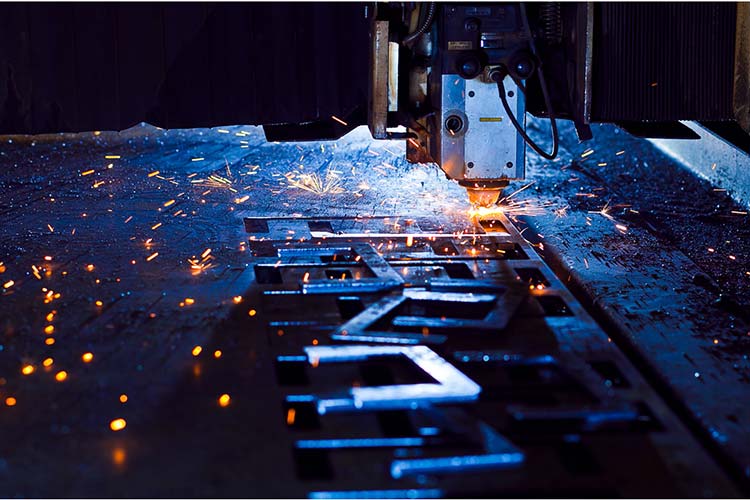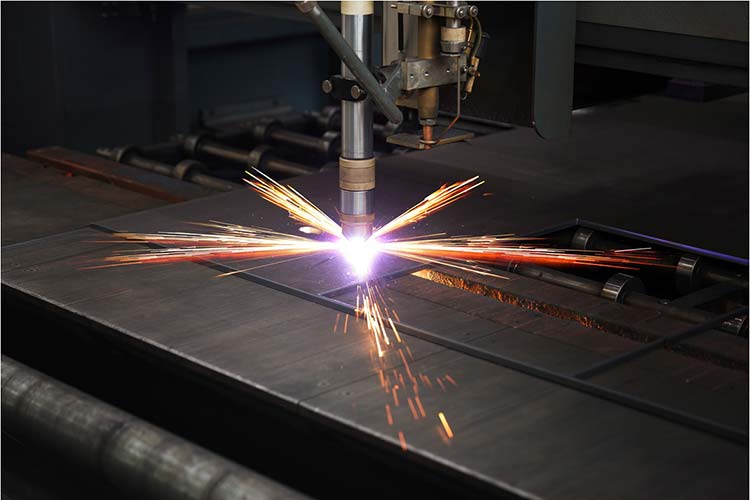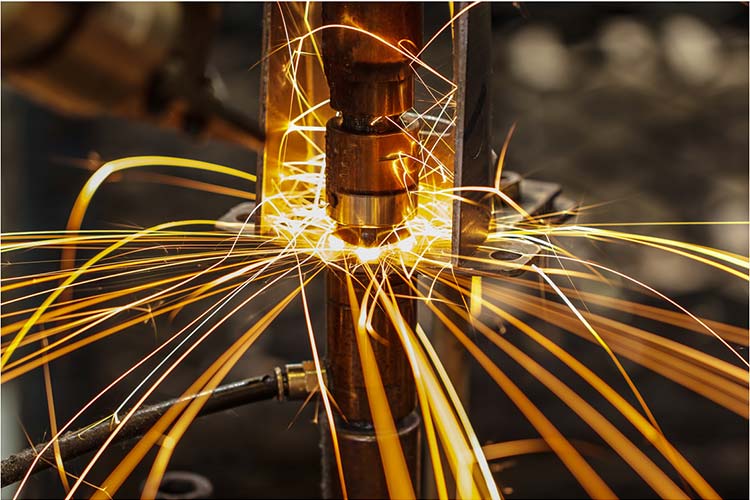When it comes to cutting metals and other materials, there are two main cutting choices: plasma cutting and laser cutting. Both methods offer an effective solution for the fabrication of materials unsuitable for cutting by traditional methods.
Yet there’s one question that a lot of manufacturers have when it comes to having their materials cut: Which one is better? Laser or plasma?
Plasma, of course, had the head start and was first used to cut metal in the 1950s, with lasers only becoming utilised as a cutting method in 1965.
But does age give the plasma cutter an advantage? Or does the fact that the laser cutter came late to the party mean it had more time to develop?
Let’s discuss the benefits of each cutting type, before deciding which is better.
Both methods are incredibly effective at what they do, so this could be a close one.
As the oldest form of cutting between the two, it only felt right that we first explored the art of plasma cutting.
Plasma cutting works by firing a gas out of a nozzle, and the cutting occurs because an electric arc is formed as this happens between the gas and the metal – and this creates plasma.
This then cuts through the metal, which is the only material that plasma cutting works on.
However, there are no limits to the types of metals that it can cut, as plasma can be made use of no matter what type of metal you require cutting. This makes it an incredibly versatile tool when it comes to the metal cutting industry.
When operating a plasma cutter, you must wear protective glasses at all times to avoid damage to your eyes, and the machine can be noisy. Plasma cutting can also be dangerous if the proper precautions are not taken before the machine is used.
Plasma is able to cut metals in various thicknesses ranging between 1mm and 80mm, and it can also cut at a speed of 20 metres per minute. In terms of specialist cutting area, plasma is best when it comes to cutting thick metal, which it does so incredibly well.
But what about laser cutting?
There are two types of lasers, Co2 and fibre lasers, and both of them are great at cutting.
Fibre lasers are best to use when you are hoping to cut a thin metal sheet, and it can work through all metal types. However, a Co2 laser cannot cut through copper, brass and aluminium as it will not work on reflective surfaces.
Yet don’t be put off.
Co2 lasers can also cut through wood and acrylics, making them a great, all-round cutting device if you have a large selection of different material types to cut in a timely manner.
Lasers can also be used for a variety of other actions as well as cutting. They can also engrave, weld, drill and much more – meaning if you have a laser device you could be open to a world of different design aspects.
The best thing about laser cutting is that it’s quick, efficient and incredibly accurate. And when it comes to the finish you’ll receive from laser cutting, you can be sure that it will leave behind a smooth edge.
However, laser cutting cannot cut materials as thick as plasma, and usually can only efficiently cut materials that are up to 25mm in thickness.
Yet the quick nature of laser cutting overall will mean a quick turn around, so this is something that needs to be taken into consideration when debating which type of cutting will be the best
Laser vs Plasma
Both lasers and plasmas have different benefits when it comes to cutting materials.
Lasers tend to be more accurate and a quicker than their plasma cutting cousin, yet plasma cutting can cut through every single metal type whereas lasers cannot.
Plasma cutting is a more dangerous process than laser cutting, yet it is also best at cutting thick materials. Lasers are more effective if your metal surface is on the thinner side, and also if you need to cut other materials such as wood.
Laser cutting also uses less energy than plasma cutting requires, making it a more eco friendly way of cutting your materials. However, it won’t be able to handle metals beyond the range of 25mm, whereas plasma cutters can cut through any type of metal up to 80mm in thickness making it more efficient when it comes to cutting metals.
Lasers are also more capable of producing a variety of different cuts, and can be used to print things in 3D as well as engraving items. As 3D printing is becoming more and more popular, it’s hard to deny how much of an advantage this gives laser cutting over the plasma cutting equivalent.
On top of this, due to the fact that laser cutting can provide a quicker turn around when it comes to any required jobs, it may be more of a suitable option to choose laser over plasma if you need your cutting in a quick manner.
Yet both plasma and laser cutting do have their own place in the cutting industry, secured by the varying benefits of both practices.
It largely depends on what you need cutting, and the thickness of it. Only then can you really determine whether laser or plasma cutting will be more effective when it comes to cutting your materials.
This blog was written by Amy Leach on behalf of laser cutting specialists Yorkshire Profiles Ltd.
Image Courtesy: Shutterstock




